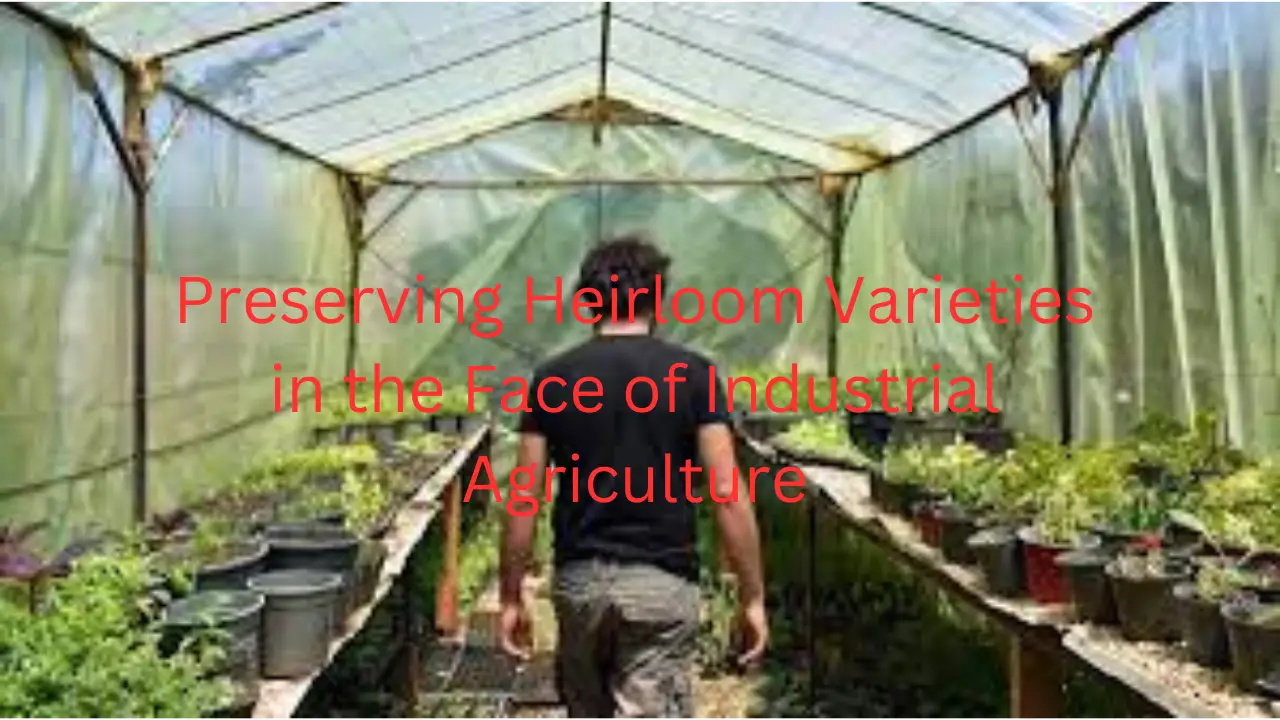
Zulay Kitchen Powerful Milk Frother Wand - Ultra Fast Handheld Drink Mixer - Electric Whisk Foam Maker for Coffee, Lattes, Cappuccino, Frappe, Matcha, Hot Chocolate & Coffee Creamer - Milk Boss Black
1% OffPreserving Heirloom Varieties in the Face of Industrial Agriculture
In the fast-paced world of modern agriculture, where efficiency and mass production are the primary goals, the rich heritage of heirloom varieties often finds itself overshadowed. These unique, time-tested cultivars have been lovingly passed down through generations, each with its own story and flavors. However, the rise of industrial agriculture has led to a decline in the cultivation of heirloom varieties. In this article, we will explore the significance of preserving heirloom varieties in the face of industrial agriculture’s dominance.
Introduction: The Beauty of Heirloom Varieties
Heirloom varieties are like living history books, each plant telling a unique story of the past. These seeds have been carefully saved and handed down for generations. Unlike the uniform and standardized crops in industrial agriculture, heirloom varieties come in a dazzling array of shapes, sizes, and colors. Their flavors are often unmatched, making them prized possessions among food enthusiasts.
The Threat of Industrial Agriculture
Industrial agriculture focuses on high-yield, uniform crops that can be efficiently grown and harvested on a massive scale. This approach has led to the neglect of heirloom varieties, which may not be as productive or uniform. As a result, many of these precious varieties have dwindled in numbers or disappeared altogether.
The Importance of Biodiversity
Biodiversity is essential for a healthy ecosystem. Heirloom varieties represent a significant part of agricultural biodiversity. They often possess unique traits that can be invaluable for breeding programs, helping to create more resilient and adaptable crops in the face of changing climates and pests.
Cultural and Culinary Heritage
Heirloom varieties are not just about preserving plants; they’re about preserving culture and culinary traditions. These varieties are deeply rooted in the cultural history of communities around the world. They are used to prepare traditional dishes that connect people to their heritage.
Sustainable Farming Practices
Heirloom varieties are often well-suited to sustainable farming practices. They tend to require fewer chemical inputs and can thrive in diverse ecosystems. By promoting the cultivation of heirlooms, we can encourage more sustainable and environmentally friendly agricultural practices.
Challenges in Preserving Heirloom Varieties
Preserving heirloom varieties is not without its challenges. They are often more susceptible to diseases and pests than modern hybrids. Additionally, the lack of demand for these varieties in commercial markets can discourage farmers from growing them.
Seed Banks and Conservation Efforts
Seed banks and conservation organizations play a crucial role in preserving heirloom varieties. They store seeds, ensuring that even rare varieties are not lost forever. These efforts are essential for safeguarding our agricultural heritage.
The Role of Farmers and Gardeners
Farmers and gardeners are the custodians of heirloom varieties. By growing and saving seeds, they keep these treasures alive. Supporting local farmers who cultivate heirlooms is a practical way to ensure their continued existence.
Educating the Masses
Education is key to preserving heirloom varieties. Raising awareness about their value and uniqueness can inspire more people to grow and appreciate them. This can be done through workshops, seminars, and educational programs.
Support from Culinary Enthusiasts
Chefs and food enthusiasts can also play a vital role. By incorporating heirloom ingredients into their menus and recipes, they can promote the use of these varieties and encourage their cultivation.
The Future of Heirloom Varieties
The future of heirloom varieties depends on our collective efforts. As we recognize their cultural, culinary, and ecological significance, we can work together to ensure that they continue to thrive alongside industrial agriculture.
Conclusion
In a world driven by efficiency and uniformity, preserving heirloom varieties is a testament to our commitment to diversity, tradition, and sustainability. These unique plants connect us to our past, enrich our present, and hold the promise of a more resilient agricultural future.
FAQs
1. What are heirloom varieties? Heirloom varieties are traditional plant cultivars that have been passed down through generations, known for their unique characteristics and flavors.
2. Why are heirloom varieties important? Heirloom varieties preserve biodiversity, cultural heritage, and sustainable farming practices.
3. What challenges do heirloom varieties face? They face challenges such as susceptibility to diseases, pests, and limited commercial demand.
4. How can individuals support heirloom varieties? Individuals can support heirloom varieties by growing them, raising awareness, and patronizing farmers who cultivate them.
5. What is the future of heirloom varieties? Their future depends on collective efforts to preserve and promote their cultivation in the face of industrial agriculture.
In conclusion, preserving heirloom varieties is not just a matter of nostalgia; it’s a crucial step toward a more diverse, sustainable, and flavorful agricultural future. By valuing these living treasures and actively participating in their conservation, we can ensure that they continue to thrive in the face of industrial agriculture’s dominance.











